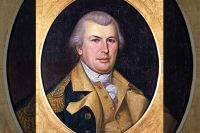Occupational reading
Flower Confidential: The Good, the Bad, and the Beautiful in the Business of Flowers by Amy Stewart. Algonquin Books, 2006. 320 pages.
Beginning a new occupation — whether as a grocery store cashier or a police officer, a teacher or a house painter — exposes us to a different world, a world with its own special codes, techniques, and jargon.
Sometimes we speak or act as if we understand how people function in different occupations. The most severe critics of waiters and waitresses, for example, tend to be people who have never waited tables, and I have heard various parishioners in my church wonder aloud if the priest spends all his time after daily mass watching television or hobnobbing with friends. The truth is we see only the veneer of any occupation. The waiters and waitresses, doctors and nurses, truck drivers and plumbers, and everyone else who works in this country remain a mystery in terms of the details of their work life except to those who share that life.
For readers, fortunately, there are books that allow us a glimpse into the work lives of our fellow citizens. If we can read and if we can find the right book, we don’t need to captain a fishing boat, drive an ambulance or represent a client in court to know something of the demands and intricacies of these professions.
Sometimes such a book can yield a bouquet of pleasant surprises. Few of us doubtless give much thought to the work that lies behind the flowers we pick up at our local florist. In Flower Confidential: The Good, the Bad, and the Beautiful in the Business of Flowers (Algonquin Books of Chapel Hill, 2007) Amy Stewart divulges the intricate and sometimes strange workings of this fascinating business. She shows us where flowers are grown, how they reach the marketplace, and what steps are taken to get them into our homes.
Stewart begins her chronicles by telling us how and where various flowers are bred. She introduces us to growers like Leslie Woodruff, who developed beautiful and unique lilies that made minor fortunes for other people, but who died himself in reduced circumstances. We learn how breeders try to concoct flowers with an extended shelf life, so that the flowers may no longer retain any scent but will hold their color and form longer than their predecessors. We learn about ethylene, a gas that helps ripen fruit but harms flowers (Stewart tells us that retail florists “roll their eyes” at grocery stores that put their floral section next to the produce department).
Related Items
Stewart takes us on several international tours. Holland, the home of the tulip, is still a major player in the market of flowers, but most of the flowers coming into the United States these days are grown in Central and South America. We learn about the sexual harassment of female employees in Columbia’s flower industry, about the widespread use of pesticides without regard to the health of the workers, about the shipments of flowers worldwide from markets in Africa and the Far East.
Valentine’s Day is the biggest money day for American florists, and Stewart does a fine job showing how retail florists prepare for this day, how they keep ahead of their orders while maintaining their sanity. I have a friend who is a florist in Waynesville and have witnessed first-hand the frantic pace that Valentine’s Day — and Mother’s Day — demand.
At the end of her book, Stewart includes a list of tips for taking care of cut flowers. If like most Americans you buy flowers at some point during the year — for a funeral, for a wedding, for romancing the one you love — you’ll enjoy this marvelous account of where those flowers came from and the work it took to put them into your hands.
•••
Anthony Bourbain’s Kitchen Confidential: Adventures in the Culinary Underbelly (ISBN 0-06-093491-3, $14) is a wonderful, amusing account of what it means to be a chef. Though I laughed throughout this biting, witty account of what it took for Bourbain to climb his way up the kitchen ladder, my favorite chapter is probably the least humorous. “A Day in the Life” gives us an inside look at Bourbain’s wild daily ride as a major chef. The early rising, when he is already planning out how the different stations will serve their foods; the buying of meat; supervising the preparation of everything from duck sauce to ravioli to chocolate desserts; the inevitable screwups as the evening becomes a frantic rush to get out hundreds of dishes; the intense fight to satisfy the customer. Anyone who has ever worked in a busy restaurant will nod in sympathetic recognition at the scene Bourdain presents.
•••
Postcards from Ed: Dispatches and Salvos from an American Iconoclast (ISBN 1-57131284-6, 2006, $24.95), a posthumous collection of writings from Edward Abbey, tells us much about the life of a writer and thinker. Until the end of his life in 1989, Edward Abbey remained a writer who stood outside the cultural mainstream. He was a man who went his own way. Through his writings he became something of a hero to environmentalists, yet he also publicly opposed illegal immigration. Unlike so many of today’s writers, he didn’t coddle up to the universities or conduct writing seminars. He struggled in a variety of occupations, writing all the time.
Abbey’s letters are most noticeable for their forcefulness. Whether he is writing John Gardner to both compliment and admonish him for his On Moral Fiction, or whether he is writing the New York Times for its dishonesty in refusing to publish a piece on immigration that they’d requested from him, we see a man who hated deception, who feared government whether it was Russian or American, who cared enough about literature to write authors who were his friends and tell them where he thought their writing had gone wrong. Here, for instance, he writes to Jim Harrison, best known perhaps for Legends of the Fall, about an article in which Harrison had called Jack Kerouac a great soul:
Your words waggled before my eyes. Have you tried to read On the Road lately? ... But Kerouac — you mean that creepy adolescent bisexual who dabbled in Orientalism and all the other fads of his time, wrote stacks of complacently self-indulgent, onanistic books and then drank himself to death while sitting on his mother’s lap, down in Florida somewhere? Surely not so. Say it ain’t so.
Labor omnia vincit. Work conquers all. Another poet wrote amor ornima vincit, opting for love over labor. Combine the two — love and work — and we see in these accounts of work and vocation a formula for a life fully lived.









